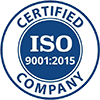How Are CNC Complex Machining Parts Made?
Created at : May 15, 2025
CNC complex machining parts represent the pinnacle of precision, performance, and production capability in advanced manufacturing. These parts serve critical roles in industries like aerospace, automotive, medical devices, robotics, and more—where intricate geometry and tight tolerances are not just preferred but essential.
So, what exactly are these parts, and how are they made? Let’s dive into the process and purpose behind CNC complex machining parts.
What Are CNC Complex Machining Parts?
CNC (Computer Numerical Control) complex machining parts are components created using computer-controlled machining tools that can execute highly detailed and precise movements. The “complex” designation refers to:
- Multi-axis geometries that require simultaneous movement in 3, 4, or 5 directions.
- Micron-level tolerances for critical applications.
- Advanced materials such as titanium, stainless steel, or high-performance plastics.
- Difficult features like undercuts, tapered bores, and compound curves.
These parts are typically found in high-performance settings, such as turbine blades in aircraft engines, surgical implants in hospitals, or high-precision gear housings in automotive systems.
How Are CNC Complex Machining Parts Manufactured?
Creating complex CNC parts is a meticulous and multi-step process that blends digital design with cutting-edge machine capabilities. Here's how it works:
1. CAD Design and 3D Modeling
The process begins with Computer-Aided Design (CAD). Engineers create a detailed digital 3D model of the part using software such as SolidWorks or AutoCAD. This model includes all specifications, dimensions, tolerances, and features.
For especially intricate parts, simulations and finite element analysis may be used to predict performance under real-world conditions.
2. CAM Programming and G-Code Generation
The CAD model is imported into Computer-Aided Manufacturing (CAM) software like Mastercam or Fusion 360. CAM software converts the digital model into tool paths—precise instructions for how the machine will cut, drill, or mill the material.
These tool paths are then translated into G-code, the standardized language that CNC machines understand.
3. Material Selection and Machine Setup
Raw material—metal, plastic, or composite—is selected based on the application requirements. It’s typically loaded into the CNC machine in the form of a billet, bar stock, or block.
Specialized fixtures or jigs may be used to hold the part securely during the machining process, especially when multiple orientations or re-clamping would otherwise be required.
4. CNC Machining Operations
The actual machining is done using different types of CNC machines, depending on the complexity and design of the part:
- CNC Milling Machines (3- to 5-axis): Ideal for creating pockets, contours, and intricate surface details.
- CNC Turning Centers: Best for round or cylindrical components like bushings, shafts, and valves.
- Multi-Axis Machining Centers: These advanced machines can move in multiple directions simultaneously, enabling single-setup machining for complex, multi-sided parts.
5. Finishing Operations
Once machining is complete, finishing steps are performed to meet final specifications:
- Deburring: Sharp edges and burrs are removed for safety and accuracy.
- Surface finishing: May include anodizing, polishing, sandblasting, or coating depending on the part’s application.
- Precision Inspection: Tools like Coordinate Measuring Machines (CMM), calipers, and optical comparators are used to verify dimensional accuracy and surface finish.
6. Quality Assurance and Packaging
Each part undergoes rigorous quality control checks to ensure it meets exact engineering and customer specifications. Once approved, the parts are carefully packaged—often with protective inserts for high-value or sensitive items.
Optional Post-Processes for Specialized Parts
For applications that require extreme durability or precision, additional steps may be included:
- Heat treatment to enhance material properties like hardness or stress resistance.
- Electrical Discharge Machining (EDM) to create ultra-fine features that are difficult to achieve with traditional tools.
- Part assembly if the CNC-machined piece is part of a larger mechanism.
Conclusion
CNC complex machining parts are not just components—they are critical solutions to some of the world’s most demanding engineering challenges. Their production combines the power of digital design, high-performance materials, and advanced automation.
From aerospace turbines to medical implants, the complexity of these parts allows modern industries to achieve precision, repeatability, and functionality that would have been unimaginable just a few decades ago.
